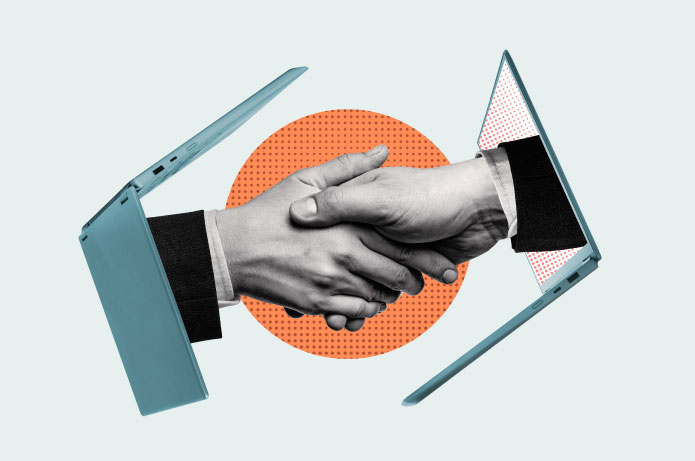O futuro da pesquisa de mercado já chegou — e ele é moldado por algoritmos, aprendizado contínuo e, sobretudo, pelas pessoas. É o que mostra o estudo “O Pesquisador de 2025: A Transformação Adaptativa da Pesquisa de Mercado com IA”, conduzido pela HSR Specialist Researchers, que revela as profundas mudanças que a inteligência artificial está promovendo no setor e destaca um novo perfil profissional: adaptativo, ético e tecnológico. “Desde o início, objetivamos entender o impacto da IA na realização das pesquisas, avaliar as prioridades e desafios organizacionais trazidos, bem como analisar a prontidão individual e as necessidades de desenvolvimento de habilidades dos profissionais”, explica Renato Trindade, CEO da HSR Specialist Researchers.
Para isso, a empresa — uma das principais especialistas independentes da América Latina — ouviu 86 profissionais atuantes em agências de pesquisa e áreas de análise de consumo de empresas de diversos setores. O levantamento revela que a IA já é uma prioridade nessas organizações, especialmente em aplicações como análise de dados (65%) e automação de processos internos (53%). É também usada para desenvolvimento de modelos personalizados de insights (39%) e criação de ferramentas de inteligência preditiva (36%). E os principais benefícios percebidos são aumento da eficiência, melhoria nas análises e fomento à inovação.
“Mais do que um desafio técnico, a IA representa um desafio adaptativo — conceito que exige líderes capazes de guiar mudanças profundas e contínuas. Isso implica promover aprendizado coletivo, lidar com resistências, garantir segurança psicológica e sustentar a transformação ao longo do tempo”, afirma Karina Milaré, sócia da HSR. Para ela, mais do que implementar ferramentas, é preciso ressignificar o papel da pesquisa de mercado dentro das empresas.
O novo papel do pesquisador com IA
De acordo com o estudo, o pesquisador do futuro assume funções como analista estratégico, curador de dados e facilitador da interação homem-máquina. Isso requer mais do que domínio técnico: exige sensibilidade para se comunicar com clareza, garantir o uso ético das tecnologias e atuar de forma cada vez mais integrada.
Hoje, os pesquisadores já demonstram interesse e boa receptividade em relação à adoção da IA alinhando-se à busca das empresas por maior eficiência e competitividade. No entanto, ainda há um caminho de adaptação a percorrer: apenas 17% dos entrevistados se sentem plenamente preparados para lidar com as transformações trazidas pela tecnologia. Outros 50% se consideram parcialmente prontos, 27% estão em processo de desenvolvimento e 6% reconhecem não estar preparados.
As principais dificuldades incluem a falta de conhecimento técnico aprofundado, desafios na aplicação prática da IA nos processos de pesquisa, interpretação de dados gerados e necessidade de adaptação a novos fluxos de trabalho. Para superar essas barreiras, 80% deles têm recorrido a estratégias de aprendizado autodirigido, como leitura, vídeos e experimentação prática, 66% a colaboração entre colegas, 49% a cursos online, 44% a participação em eventos e workshops e 10% a mentoria. “Habilidades como aprendizado contínuo e resiliência ganham relevância no contexto de rápida evolução tecnológica”, reforça Karina.
A percepção dos entrevistados é que entre as competências mais valorizadas para o futuro da profissão estão: análise de dados (60%), aprendizado contínuo e curiosidade (56%), storytelling com dados e comunicação (48%), resiliência e adaptabilidade (46%), alfabetização em IA (35%), consciência ética e pensamento crítico (21%), e empatia e escuta ativa (17%). “Portanto, o papel humano permanece central. A IA é uma aliada, não uma substituta, tanto é que 49% dos entrevistados demonstram insatisfação com a velocidade da adoção da IA em suas organizações. Isto porque embora as ferramentas estejam disponíveis, a transformação cultural e estrutural ainda precisa amadurecer”, ressalta Renato Trindade.
Os participantes destacaram ainda que alguns desafios persistem na adoção da tecnologia como a escolha das ferramentas certas (70%), ausência de estratégias claras (55%), resistência à mudança (45%), falta de conhecimento técnico (45%), preocupações éticas (30%) e restrições orçamentárias (18%). Outros entraves são a necessidade de lidar com vieses algorítmicos (71%), adaptação a novos processos (61%) e resistência contínua à transformação (44%).
“A maioria dos profissionais demonstra um otimismo cauteloso: há confiança no potencial da IA, mas também consciência de que essa revolução exige preparo constante e grande capacidade de adaptação. Afinal, Novas soluções e ideias surgem todos os dias. Estar aberto a aprender e inovar é essencial”, destaca Trindade.
Uma metodologia inovadora: E-Talks.AI
O estudo utilizou uma abordagem inédita, a E-Talks.AI — ferramenta empática baseada em inteligência artificial, que combina análises qualitativas e quantitativas das respostas dos participantes. A amostra foi comporta por 86 profissionais ouvidos, dos quais 64% têm mais de 10 anos de experiência no mercado, 22% mais de cinco anos, 11% mais de dois anos, e apenas 6% atuam na área há menos tempo. Entre eles, 53% trabalham em empresas de pesquisa e 47% de áreas de Consumer Insights de empresas de diversos setores.











